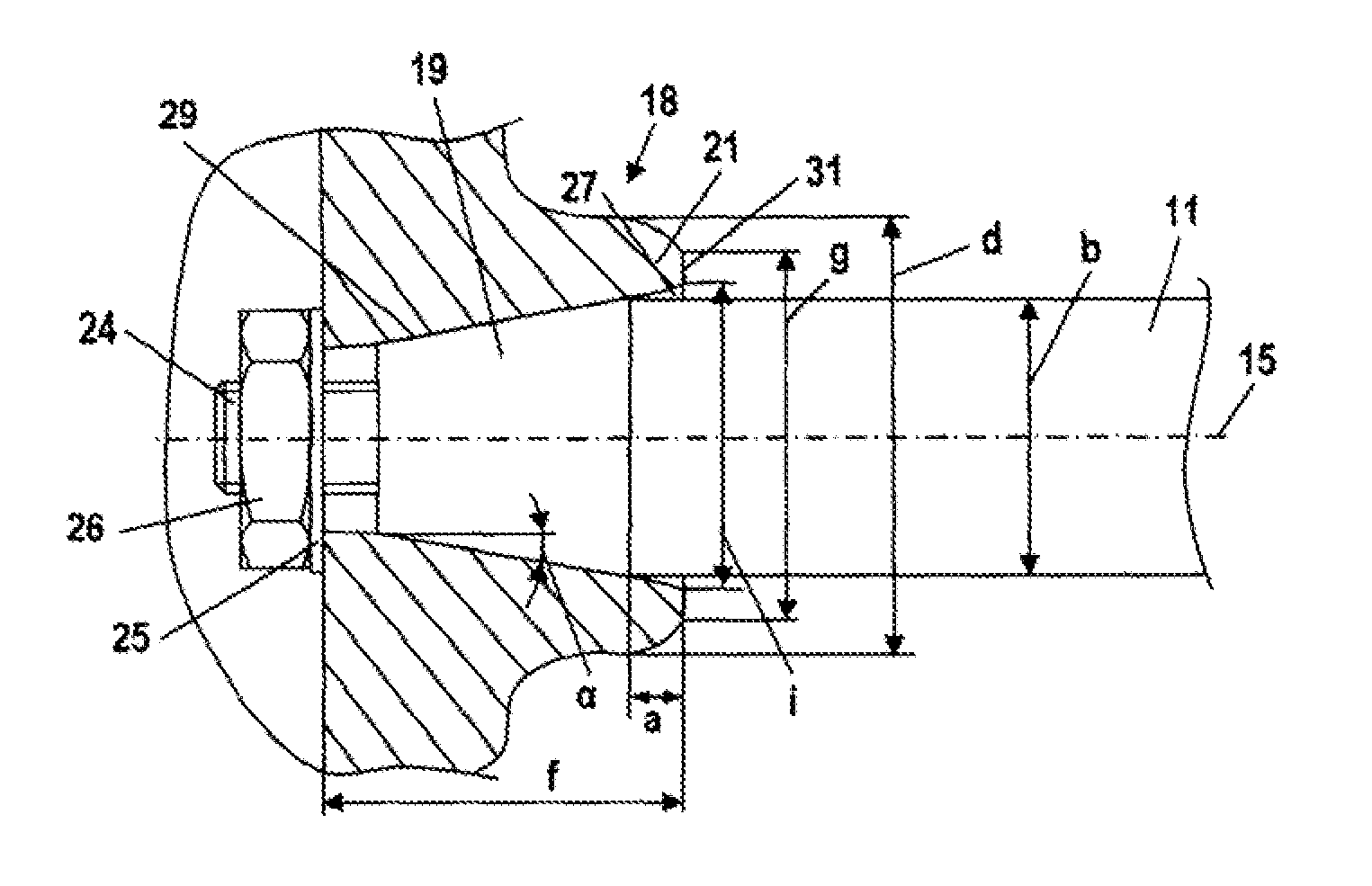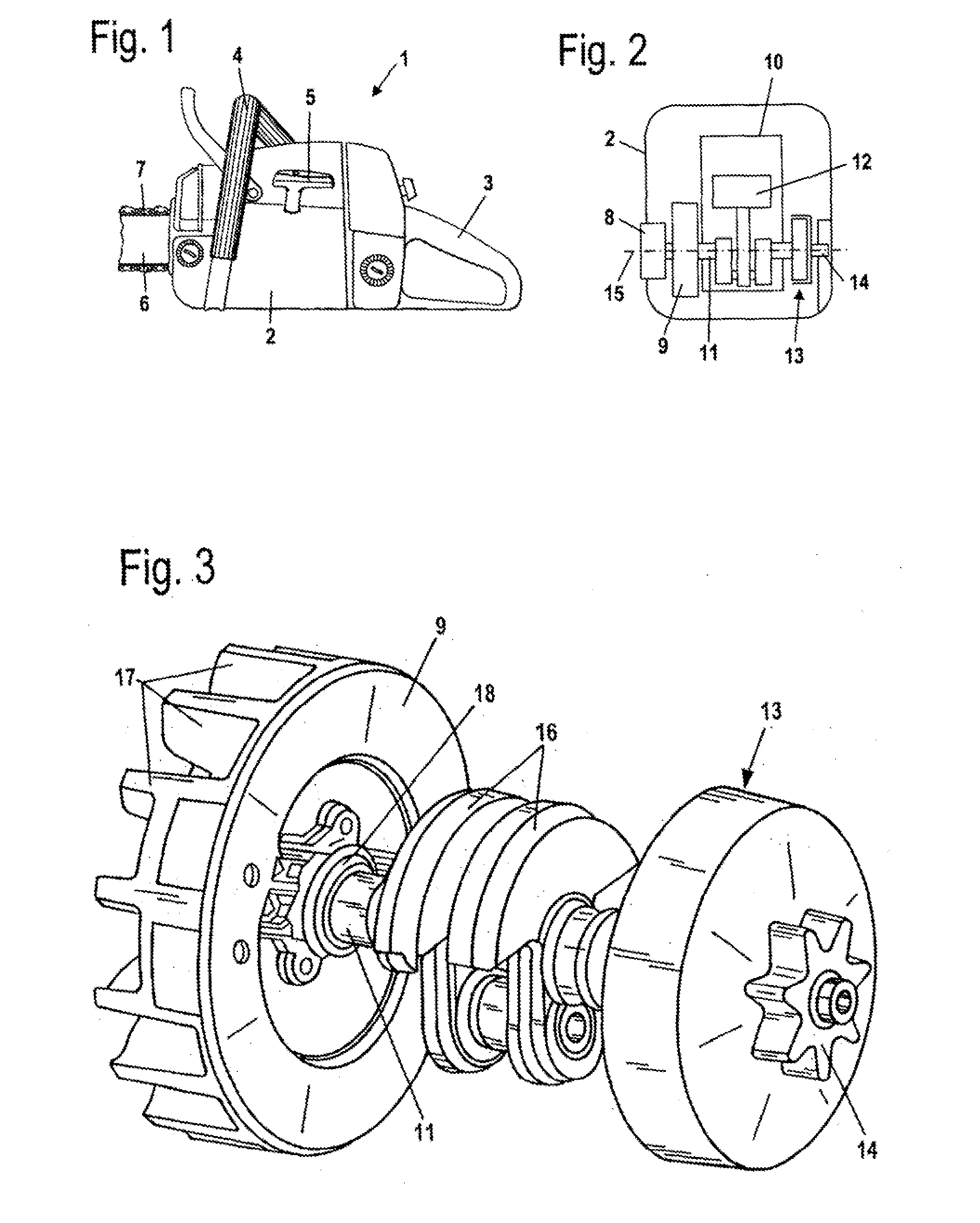Shaft/Hub Connection and Manually Guided Implement
a technology of shaft and hub, applied in the direction of couplings, rod connections, fastening means, etc., can solve the problems of increasing stress that occurs during dynamic operation simultaneously, and prolonging service life, so as to reduce dynamic stress, reduce dynamic fatigue stress, and ensure the effect of good service li
- Summary
- Abstract
- Description
- Claims
- Application Information
AI Technical Summary
Benefits of technology
Problems solved by technology
Method used
Image
Examples
Embodiment Construction
[0023]Referring now to the drawings in detail, the power saw 1, which is schematically shown in FIG. 1, has a housing 2 on which are secured a rear handle 3 and a tubular handle 4 for guiding the power saw 1. Extending from the housing 2 is a starter handle 5 for starting the drive motor of the power saw 1. Disposed on the power saw 1 is a guide bar 6 on which a saw chain 7 is driven in a circulating manner.
[0024]The saw chain 7 is driven by the driving pinion 14, which is shown in FIG. 2. The pinion 14 is connected via a centrifugal clutch 13 with a crankshaft 11 of an internal combustion engine 10 that is disposed in the housing 2. The internal combustion engine 10 is, in particular, a two-cycle engine or a mixture-lubricated four-cycle engine. The crankshaft 11 is driven in a rotating manner about an axis of rotation 15 by a piston 12 of the internal combustion engine 10.
[0025]On that side of the internal combustion engine 10 opposite the driving pinion 14 a flywheel 9 is secured...
PUM
 Login to View More
Login to View More Abstract
Description
Claims
Application Information
 Login to View More
Login to View More - R&D
- Intellectual Property
- Life Sciences
- Materials
- Tech Scout
- Unparalleled Data Quality
- Higher Quality Content
- 60% Fewer Hallucinations
Browse by: Latest US Patents, China's latest patents, Technical Efficacy Thesaurus, Application Domain, Technology Topic, Popular Technical Reports.
© 2025 PatSnap. All rights reserved.Legal|Privacy policy|Modern Slavery Act Transparency Statement|Sitemap|About US| Contact US: help@patsnap.com



